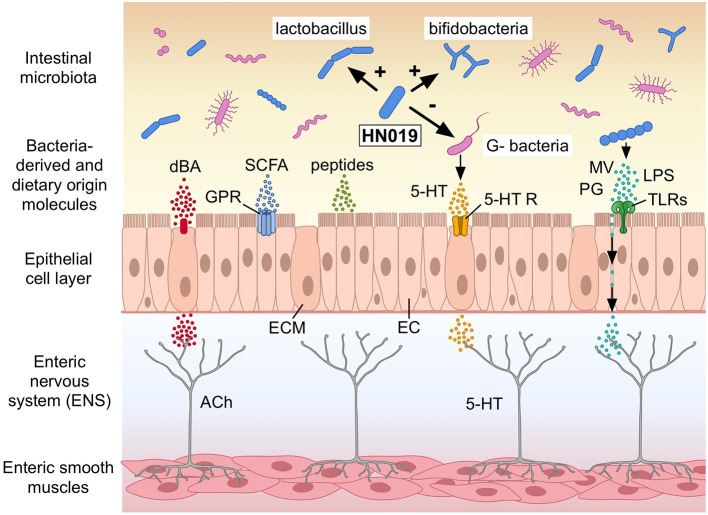Figure 1.
Potential mechanisms how Bifidobacterium lactis HN019™ (HN019) may modulate colonic motility in humans. The human intestinal epithelial cell layer comprises, among others, of epithelial cells (EC) and enterochromaffin cells (ECM) lining the gut wall. B. lactis HN019™ may stimulate Lactobacilli and Bifidobacteria and inhibit certain Gram-negative bacteria (G− bacteria). Bacteria-derived and neurotransmitters or modulators of dietary origin, such as deconjugated bile acids (dBA), short chain fatty acids (SCFA), and serotonin (5-HT) could interact with their host receptors expressed in the epithelial cell layer; G protein-coupled receptors (GPR); and 5-HT receptors (5-HT R). Microvesicles (MV), peptidoglycan (PG), and lipopolysaccharide (LPS) from different bacteria interact with Toll-like receptors (TLRs). These components may also cross the epithelial layer and like the receptors signal afferent neurons in the enteric nervous system (ENS) with among others acetylcholine (ACh) to regulate colonic motility. Modified after Dalziel et al. (2021) (with permission). ©Pinja Kettunen/SciArt and IFF, with permission.

